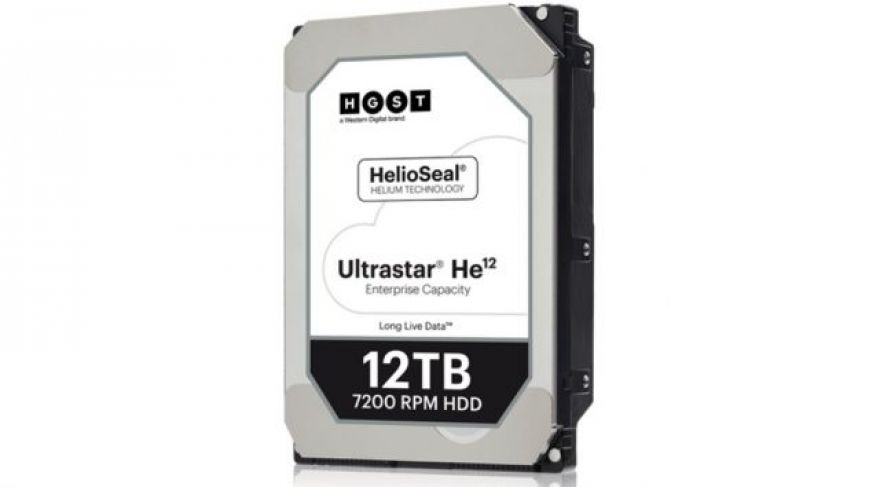
Western Digital announces high-capacity 12TB, 14TB helium-filled hard drives
Hard drives may not demand the enthusiast attention they once did, thanks to the vastly improved performance of . But they still offer much more storage at a lower cost per gigabyte than your typical solid state drive. Western Digital was the first company to bring helium-filled hard drives to market, and the company is doubling down on its technology with the introduction of two new drives, with a 12TB drive shipping now and a 14TB coming in the near future.
The 12GB HGST Ultrastar He12 (HGST is a subsidiary of Western Digital) is an eight-platter drive that packs 864Gbits/sq.
There is a difference between the 12TB and upcoming 14TB drives, however, even though both are based on the same eight-platter design and rely on helium: The 12TB drive uses PMR (perpendicular magnetic recording) while the 14TB drive will use SMR (shingled magnetic recording). SMR can reach higher areal densities than PMR because the drive tracks are overlaid on top of one another, as shown in the image below (the image is originally from a Seagate presentation, but the concept applies to all SMR drives). For more on SMR and Seagate’s rollouts, see our coverage and .
Because there is now an overlap across the tracks, the HDD’s write head will overwrite more than one track at the same time. This requires the drive to read and then rewrite data to multiple tracks at once to avoid erasing vital information, and it slows down overall drive performance. As a result, SMR drives typically aren’t recommended for consumer use — they’re intended for enterprise deployments where their drawbacks are outweighed by the increased storage capabilities they offer. SMR drives can pack up to 25% more data on the same platter as a conventional PMR drive, so it wouldn’t surprise us to see Western Digital roll a 16TB SMR drive at some point in the not-too-distant future. There are two kinds of SMR drives: host-managed and device-managed. Host-managed drives require the operating system and/or applications to manage their idiosyncrasies and ensure that track rewriting is kept to a minimum, while device-managed drives present to the operating system like standard hard drives. The upcoming Ultrastar He12 14TB is a host-managed device, which makes it a poor fit for consumer hardware.
Seagate and other companies are expected to introduce their own 12TB drives in 2017, with 16TB drives expected in the next few years (our tea leaves are mum on whether this points to 2018 or 2019-2020 for new drive introductions).
Now read: